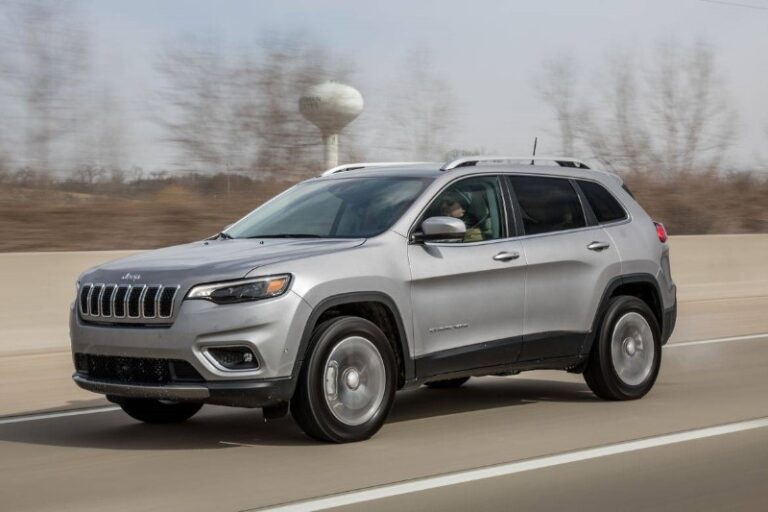2016 Jeep Grand Cherokee Miles Per Gallon

The 2016 Jeep Grand Cherokee remains a popular choice for drivers seeking a blend of off-road capability, on-road comfort, and a touch of luxury. A key consideration for many buyers, however, is fuel economy. This article provides a detailed look at the 2016 Jeep Grand Cherokee's miles per gallon (MPG) ratings, covering various engine options and real-world considerations.
Engine Options and EPA Ratings
The 2016 Grand Cherokee offered a diverse engine lineup, each with its own fuel efficiency profile. Understanding these differences is crucial for potential buyers and mechanics alike.
- 3.6L Pentastar V6: This was the standard engine, delivering a good balance of power and efficiency. The EPA estimated MPG for a 2WD model was around 17 city / 25 highway / 21 combined. The 4WD version saw a slight decrease, typically rated at 17 city / 24 highway / 19 combined.
- 5.7L Hemi V8: For those prioritizing power, the Hemi V8 provided significantly more grunt. However, this came at the cost of fuel economy. The 2WD models were rated around 14 city / 22 highway / 17 combined, while the 4WD versions were slightly lower.
- 3.0L EcoDiesel V6: The EcoDiesel offered the best fuel economy in the lineup. This turbocharged diesel engine delivered strong torque and impressive MPG figures. The 2WD models were rated at approximately 22 city / 30 highway / 25 combined, with 4WD versions achieving slightly lower numbers. Note: The EcoDiesel engine faced scrutiny regarding emissions compliance, so a thorough inspection is advised when considering a used model.
- 6.4L Hemi V8 (SRT): Found in the high-performance SRT model, this engine prioritized power above all else. Fuel economy was understandably low, with EPA estimates around 13 city / 19 highway / 15 combined.
Factors Affecting Real-World MPG
While the EPA ratings provide a useful benchmark, several factors can significantly impact the actual MPG you experience. These include:
- Driving Habits: Aggressive acceleration, hard braking, and high speeds all contribute to reduced fuel economy. Maintaining a consistent speed and anticipating traffic conditions can help improve MPG.
- Vehicle Maintenance: Regular maintenance, such as oil changes, air filter replacements, and tire inflation, is essential for optimal fuel efficiency. A poorly maintained engine will consume more fuel.
- Tire Pressure: Underinflated tires increase rolling resistance, forcing the engine to work harder and consume more fuel. Check and maintain the recommended tire pressure regularly.
- Load and Towing: Carrying heavy loads or towing trailers significantly reduces MPG. The heavier the load, the more fuel the engine will burn.
- Terrain: Driving in hilly or mountainous terrain requires more power and will result in lower MPG compared to driving on flat roads.
- Weather Conditions: Extreme temperatures, both hot and cold, can impact fuel economy. Cold weather, in particular, can decrease MPG as the engine takes longer to reach its optimal operating temperature.
Diagnosing Fuel Economy Issues
If you're experiencing significantly lower MPG than expected, it's important to diagnose the underlying cause. Common issues include:
- Faulty Oxygen Sensors: Oxygen sensors are crucial for monitoring exhaust gases and adjusting the air-fuel mixture. Faulty sensors can lead to inefficient combustion and increased fuel consumption.
- Clogged Fuel Injectors: Dirty or clogged fuel injectors can disrupt the fuel spray pattern, resulting in incomplete combustion and reduced MPG.
- Vacuum Leaks: Vacuum leaks can throw off the air-fuel mixture, leading to poor engine performance and decreased fuel economy.
- Malfunctioning Thermostat: A thermostat that's stuck open can prevent the engine from reaching its optimal operating temperature, resulting in increased fuel consumption.
- Dragging Brakes: If the brakes are dragging, even slightly, it can create additional resistance and reduce MPG.
A diagnostic scan using an OBD-II scanner can help identify potential issues. Consult a qualified mechanic for proper diagnosis and repair.
Conclusion
The 2016 Jeep Grand Cherokee MPG varies significantly depending on the engine choice and driving conditions. By understanding the factors that influence fuel economy and performing regular maintenance, owners can optimize their MPG and enjoy the versatility and capability that the Grand Cherokee offers. Remember to consider the trade-offs between power and efficiency when selecting an engine, and always prioritize safe and responsible driving habits.
